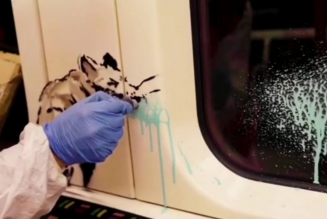Despite pledges from massive social media companies to remove dangerous instances of coronavirus misinformation – from false causes to false cures – Silicon Valley and fact-checkers around the world are struggling to stem the flow of fake news about the pandemic.
Last week, a video titled “Plandemic” went viral, clocking up millions of views and clicks across Facebook and YouTube before the companies took action.
“I’ve not seen a video of this type gain this kind of viral traction so quickly,” Alan Duke, the editor in chief of Lead Stories, a fact-checking group that works with Facebook told CNN.
As of last-week Thursday afternoon, a book that features the subject of “Plandemic” has rocketed to number 1 on Amazon’s Best Seller’s List, where it remained over the weekend. After being asked, an Amazon spokesperson told CNN, “This book does not violate our content guidelines.”
/* custom css */
.tdi_3_55b.td-a-rec-img{ text-align: left; }.tdi_3_55b.td-a-rec-img img{ margin: 0 auto 0 0; }
Experts in tracking disinformation told CNN that different groups that push conspiracy theories, like QAnon and anti-vaccine activists, have found common ground in peddling false and misleading claims about COVID-19.
The many as-of-yet unknowns about the virus, because of its novel nature and the speed and scale at which it has spread – combined with an anxious world desperately looking for answers, have manifested into the perfect storm in which conspiracy theorists are thriving.
Claire Wardle, the director of First Draft, a nonprofit that tracks online misinformation, warned that medical misinformation could cost lives — for instance discouraging people from getting a coronavirus vaccine if one becomes available.
Silicon Valley has developed COVID-19 specific policies since at least January. Facebook CEO Mark Zuckerberg told CNN last month, “if someone’s spreading something that puts people at imminent risk of physical harm, then we take that down.”
In terms of the video that went viral last week, it was viewed 3-million times on YouTube and Facebook posts linking to the video had been liked, shared, or commented on well in excess of 10 million times as of Thursday afternoon, according to data from social media analytics platform BuzzSumo.
That Thursday, Facebook spokesperson Andy Stone said the company was removing the video based on one of the dangerous claims made in it. Namely the suggestion that “wearing a mask can make you sick [and] could lead to imminent harm, so we’re removing the video,” Stone says.
Earlier, a YouTube spokesperson told CNN that the video was being removed for making claims about a cure for COVID-19 that had not been backed by health organizations.
Despite both companies’ pledges to remove the video, copies of it were still circulating on both platforms on Thursday evening, with new versions of the video being uploaded to YouTube throughout the day.
Unlike contemporaries Facebook and YouTube, Twitter did not introduce a blanket ban on the video. A Twitter spokesperson said the company was not doing so because the platform’s technology does not allow for users to post clips as long as the full video. But, the spokesperson said, if people do upload parts of the video directly to Twitter, the company would evaluate those clips.
Wardle says that people should be cautious when reading or sharing content on social media and points out that misinformation is often financially or ideologically motivated.
Governments dip their toes in Fake News
To further complicate matters for those trying to squash the spread of misinformation, governments across the Earth continue to engage in finger-pointing and play the blame game – usually by spreading fake news.
In March, the US State Department summoned China’s ambassador in Washington hours after a prominent Chinese official suggested that the US military may have been responsible for bringing the coronavirus to Wuhan.
On the other side, US President Donald Trump contradicted his own intelligence community by claiming he had seen evidence the coronavirus originated in a Chinese lab. Meanwhile, pervading intelligence indicates the virus more likely came from a market in Wuhan, and not a lab.
Edited by Luis Monzon
Follow Luis Monzon on Twitter
Follow IT News Africa on Twitter
/* custom css */
.tdi_4_bea.td-a-rec-img{ text-align: left; }.tdi_4_bea.td-a-rec-img img{ margin: 0 auto 0 0; }









